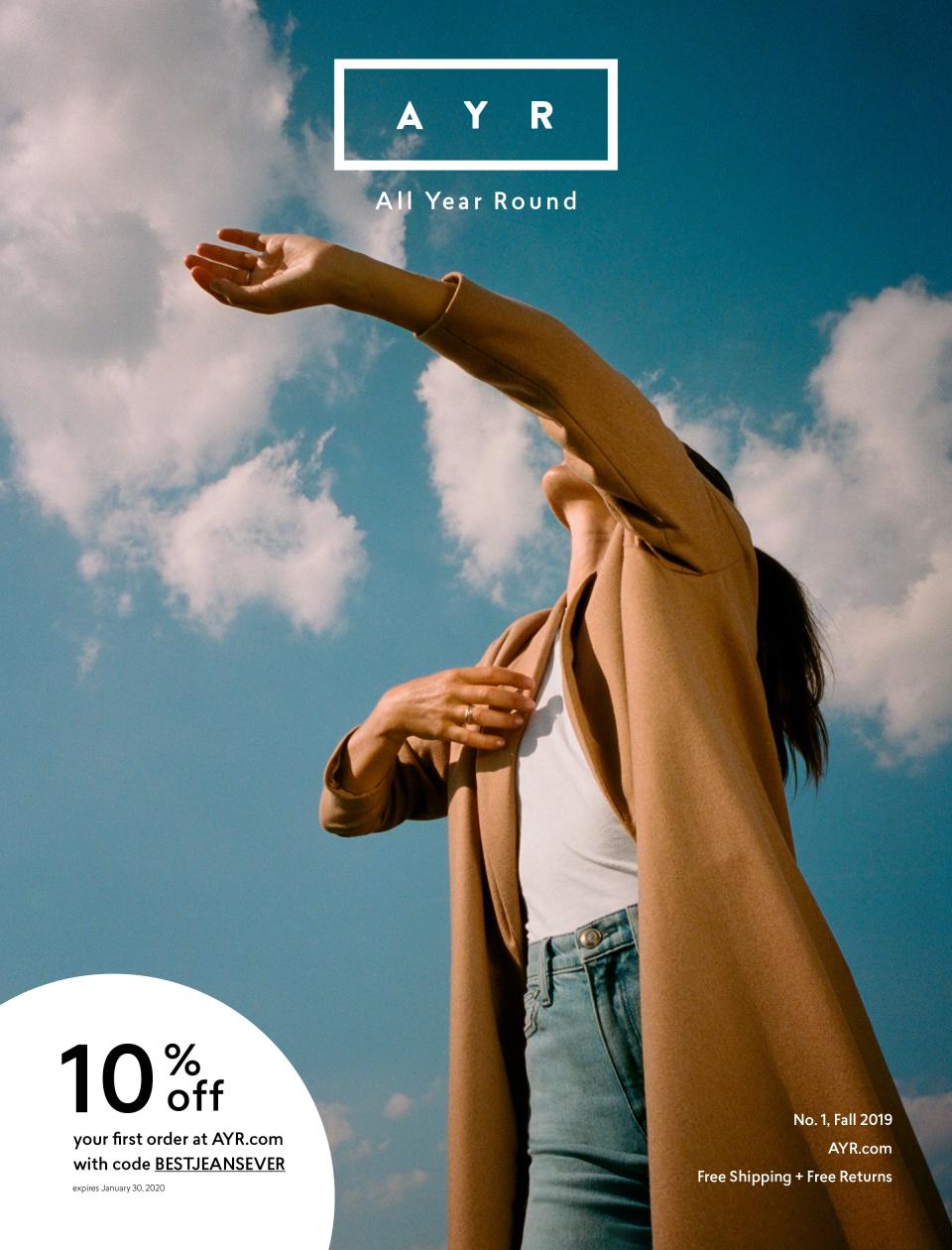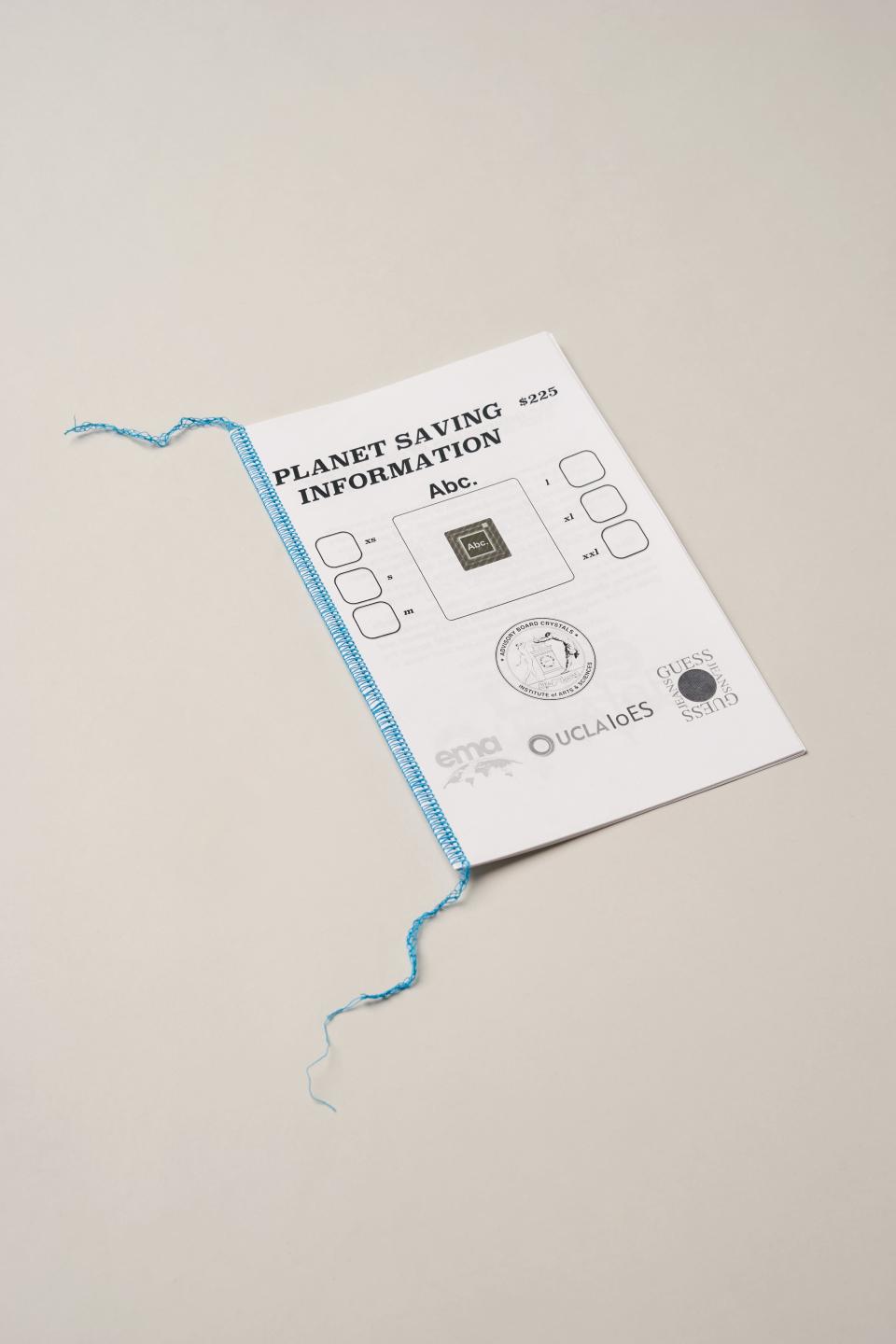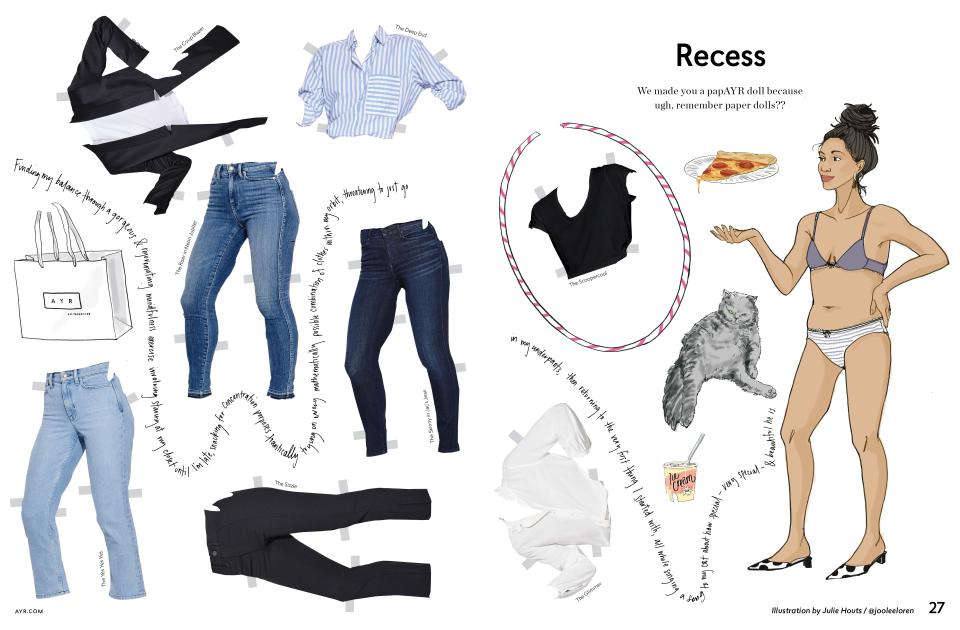Why Your Favorite Denim Brands Are Advertising Like It’s the ’90s
When Maggie Winter was growing up, she collected stacks of J.Crew catalogs and sketched the women in their pages—those smiling, glossy-haired models in crewneck sweaters and button-down shirts. “The imagery just felt so aspirational,” she says. “Growing up in a small town, it’s like, ‘Oh, yes. Someday that’s what I want.’”
It was the ’90s and early ’00s, so her only connection with brands like J.Crew and Delia’s was through the pages that came in the mail. “I would keep them and look over them over and over again and could see myself in them,” she says. “I would imagine being that cool girl at the mall in a Delia’s book or imagine being that gorgeous girl biking down a shady beach lane in J.Crew.”
Now, two decades later, as cofounder and CEO of the beloved NYC fashion label AYR, Winter is putting out a catalog of her own—one that pays tribute to the pages of her youth while still feeling distinctly current (and, of course, peddling denim).

The old-school channel might seem like an unusual bet for a digital-native brand, but printed mailers are in the midst of a renaissance of sorts, as venture-funded start-ups look to break through the noise of social media and heritage brands try to tap into the current thirst for all things nostalgic. Which means brands like AYR, which have built a customer base largely through word-of-mouth, Instagram, and email marketing, are going analog.
In 2019 these books look a little different. AYR’s catalog—the nearly six-year-old brand’s first foray into snail mail—doesn’t feature professional models, for one: Instead, Winter and cofounders Max Bonbrest and Jac Cameron (the company’s chief operating officer and creative director, respectively) rounded up a group of friends, family, and employees, and shot them near the brand’s SoHo store, using film for a lo-fi touch. They also tapped Amelia Diamond, the former head of creative at Man Repeller, to guest-edit the book, and illustrator Julie Houts to create grown-up paper dolls complete with cartoon pizza slices and an inner monologue about the “rejuvenating mindfulness exercise” of staring at one’s closet.
AYR is not alone in its appreciation—and embrace—of printed mailings. Last month, Guess, an iconic brand of the ’80s and ’90s, launched a campaign for climate change awareness with a zine called “Planet Saving Information.” It was inspired by one it made with the Environmental Media Association back in 1993.
But catalogs represent just one way that these contemporary fashion brands are turning back the clock on its advertising.

Companies like Everlane that once vowed to never open a physical store are now expanding into fleets of brick-and-mortar spaces, and direct-to-consumer brands like Reformation are dipping their toes into wholesale. True Religion, meanwhile, has quietly included a phone number—1-844-TOO-TRUE—on certain products and hang tags that customers can call to be directed to a sweepstakes contest online (because no ’90s experience would be complete without a phone call, ideally on a corded landline).
Among traditional ad channels, outdoor advertising is the bright spot: The category is forecast to grow 2.8% per year for the next five years, even as nondigital channels decline overall, according to a report from the ad-buying group Magna. Los Angeles–based Boyish jeans recently launched a billboard campaign in its hometown, and Good American ran several around the city last summer timed to the brand’s activewear launch; meanwhile, MOTHER’s street ads are a common sight in lower Manhattan.
Facebook and Instagram are still a marketer’s dream, at times seeming to know us even better than we know ourselves, but companies are finding that even they have their limitations.
“These days, when so many people are ‘consuming’ through social media, it’s easy for smaller brands to get lost in the shuffle,” says Johnathan Crocker, president of the elevated denim and ready-to-wear brand BLDWN. “Having something tangible and beautiful that represents our brand in the hands of new potential customers is a really exciting concept for our team.”
BLDWN is beginning to test direct mail this season too, and hopes to reach an audience that hasn’t come across it yet on social media, including in markets where it doesn’t yet have a brick-and-mortar presence.
“With social-media advertising, you really have less than a second to capture the customer’s attention,” says Crocker. ”For something like a catalog or direct mailer, we feel like it’s a more authentic opportunity to fully draw them in. Beautiful imagery and intentional copy is the complete opposite of clickbait.”
While there’s always the chance that a mailer gets tossed straight into the recycling bin, brands are counting on their odds being better in print than online. On average, U.S. households receive only about 18 pieces of mail a week, 8.7 of which are marketing materials, according to the United States Postal Service; office workers, by comparison, receive close to 100 emails per day on average, according to the Radicati Group, a market research firm.

AYR’s catalogs should be landing in mailboxes across all 50 states beginning later this month—it’s testing two versions and sending out 100,000 copies of each—and the brand hopes the books will have a longer shelf life (or counter life, perhaps) than most.
“Each time we open up a new channel, we want to really capitalize on the uniqueness of that medium,” says Winter. “So a store is a great place to have a social interaction—it’s not just transactional. And a website is an awesome place to deliver efficiency. And social media is a terrific place to engage in back-and-forth, constant conversation.” As for a catalog? The founders tried to focus on what paper can do that four walls or a screen can’t—which is where the paper dolls come in.
“It’s somewhere in between a legitimate catalog and two 13-year-olds sitting in their bedroom with scissors and construction paper making a zine,” she says.
A 2007 study found that the average city dweller was exposed to up to 5,000 ads per day. And that was before Instagram was even a thing. Today many of us spend more time than we’d like to admit tapping through brands’ Stories and scrolling past shadily disclosed sponsored posts. We tag our own outfit photos with where we bought our jeans and sneakers—which, even if it’s #notspon, serves essentially the same purpose. And that’s even before you get to the fact that our feeds are now peppered with ads every three posts (just me?).
Eventually it all starts to blur together: The chorus of voices telling us to buy this or that becomes just a bunch of noise. It’s no wonder brands are looking for something to jolt us all into paying attention, even if only for a few seconds. And how better to do it than to remind us of the hours we used to spend flipping through our mom’s catalogs?
Originally Appeared on Glamour

